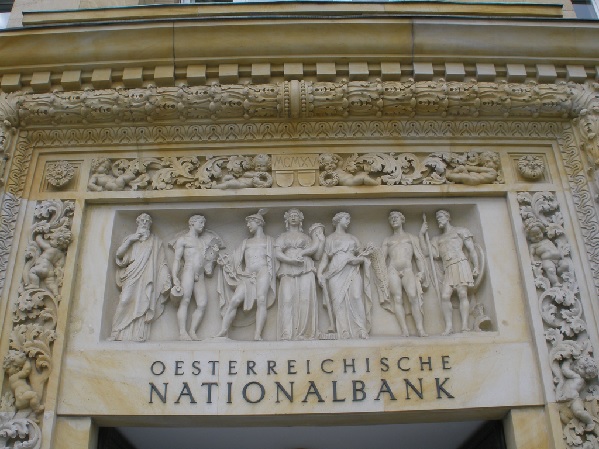
The great Austrian economist described the causes and dismal aftereffects of an investment boom. For the time being, forget stocks and buy safe bonds.
The revised second-quarter GDP data contain a record-setter: Businesses reduced their investment spending for the seventh consecutive quarter, the longest string of negative quarters since 1947. This is why the economy is in the doldrums. We are suffering from a Hayekian hangover.
Friedrich von Hayek, a Nobelist and leader of the Austrian school of economics, developed a frequently overlooked business cycle theory just before the Great Depression got under way. For Hayek and the Austrians, things go wrong when a central bank sets short-term interest rates too low and allows credit to expand artificially. The result is that businesses overestimate the value of long-lived investments and generate an investment-led boom—where a plethora of investment dollars is locked into excessively long-lived and capital-intensive projects.
Investment-led booms sow the seeds of their own destruction. They end in bankruptcies, a crash in capital spending and an inability to increase prices.
During the hangover the slumping economy is vulnerable to what Austrians termed a “secondary deflation,” where banks call in loans and are stingy about extending credit. Households produce their own version, liquidating riskier assets (like stock mutual funds) and moving into cash and government bonds. In the economy at large, investment and consumption suffer.
The seeds of a secondary deflation are beginning to sprout in the U.S. The war on terrorism will water them. Among other things, the war effort has diverted the Bush Administration’s attention from virtually all things economic. So the White House lacks a consistent and plausible pro-growth agenda to build economic confidence.
As it is being prosecuted, the war has other baleful economic consequences. In a fight against elusive terrorists, the only certainty is that it will last a long time, consume many resources and expand the modern regulatory state’s coercive powers.
In other words, the likelihood of a double-dip recession is rising ominously. What should investors do? Stop worrying about the return on your capital and start worrying about the return of your capital. Until the double-dip recession is history and the economy is registering sustained growth, stay away from stocks.
In my Nov. 18, 1996 column, I cautioned that the stock market was in a bubble phase, and when compared with bonds, stocks were expensive. Such caution seemed out of place in the wild final years of the bull market, but it would have saved you money in the long run. Over the past six years long Treasurys have averaged an 11.4% annual return, the S&P 500 only 7%.
When it comes to bonds, no outfit is bigger or better than the Newport Beach, Calif.-based Pimco family of bond funds, headed by bond guru William Gross. Pimco’s bond funds have consistently outperformed their benchmarks, as well as their competitors.
One warning: They aren’t cheap. Pimco Total Return’s annual cost is 90 cents per $100 in assets, about four times what comparable Vanguard funds charge. Total Return also has a 4.5% entrance commission; Vanguard has none. A good way to avoid the load and reduce the expenses somewhat is to buy Pimco funds through a 401(k) plan.
Just which of the 29 Pimco funds should one choose? Since writing “A Hot Tip” (Nov. 2, 1998), I have favored inflation-indexed Treasury bonds. If you hold these until maturity, you will be guaranteed the real return of your capital (the $1,000 principal floats up with the cost of living), plus a real rate of interest. Place 50% of your bond investments in Pimco’s Real Return fund, which is primarily invested in inflation-indexed securities. Over the past three years its annualized rate of return has been 12%, easily outshining the S&P 500 index, which has declined at a 11.9% annualized rate.
Another 25% should be allocated to Pimco Total Return, the world’s largest bond fund, which Gross oversees personally. Gross has a knack for pumping up results without taking undue risk. This potpourri of bonds, ranging from top-graded corporates to German sovereign debt issues, has registered an annualized return of 9.5% over the past three years.
Expect more weakening of the greenback? The remaining 25% should be go to Pimco’s Global Bond Admin fund, which racked up a 14.4% annual gain over the past year (average 5.6% over the past three). It is available for 401(k)s only. Bonds are boring. That’s a nice problem to have in this kind of market.
Author Steve H. Hanke

0 responses on "The Hayek Hangover"